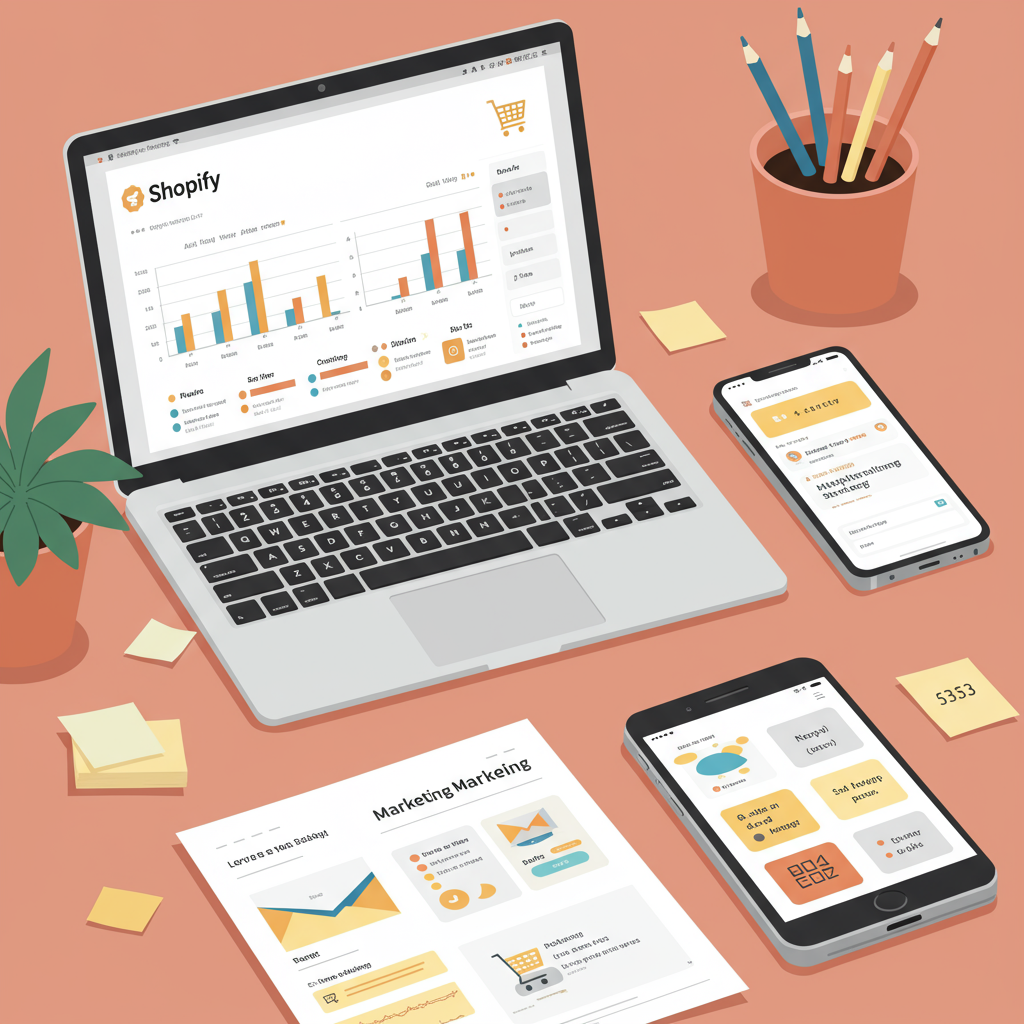Unlock Efficiency and Boost Sales with Automated Customer Journeys
Hello fellow Shopify merchants! Today, I want to talk about something that has truly transformed how I run my online store: marketing automation.
If you’re like me, you’re constantly looking for ways to optimize your time and maximize your sales without burning out. That’s where marketing automation steps in.
It’s not just a buzzword; it’s a powerful strategy that allows you to automate repetitive marketing tasks, ensuring your customers receive timely and relevant communications.
Think about it: sending welcome emails, reminding customers about abandoned carts, or following up after a purchase – these are crucial touchpoints.
Manually handling each of these for every customer can quickly become overwhelming, especially as your business grows. This is precisely why automation is a game-changer.
For us Shopify store owners, marketing automation means we can nurture leads, convert browsers into buyers, and retain existing customers on autopilot.
It frees up our valuable time, allowing us to focus on product development, customer service, or strategic growth initiatives.
So, where do we begin with setting up marketing automation for our Shopify store? I’ll walk you through the essential steps and key areas.
First, we need to identify the core areas where automation can have the biggest impact. For most e-commerce businesses, this typically revolves around email marketing and sometimes SMS.
Common automation flows include welcome series for new subscribers, abandoned cart reminders, post-purchase follow-ups, and win-back campaigns for inactive customers.
Let’s start with the tools. Shopify itself offers some built-in automation capabilities, most notably through Shopify Flow for more advanced, custom workflows.
However, for comprehensive email and SMS marketing automation, I highly recommend integrating with dedicated platforms like Klaviyo, Mailchimp, or Omnisend.
These platforms offer robust segmentation, powerful analytics, and pre-built templates that make setting up complex flows much easier.
My personal favorite for e-commerce is Klaviyo, due to its deep integration with Shopify and its focus on data-driven personalization.
Once you’ve chosen your platform, the first automation I always recommend setting up is the **Welcome Series**.
This flow triggers when someone subscribes to your email list. It’s your chance to introduce your brand, share your story, and offer a small incentive like a discount code.
I typically structure my welcome series with 2-3 emails over a few days, gradually building trust and encouraging a first purchase.
Next, and arguably the most critical for recovering lost sales, is the **Abandoned Cart Flow**.
When a customer adds items to their cart but leaves without purchasing, this automation sends a series of reminders.
I usually send the first reminder within an hour, a second after 24 hours (sometimes with a small discount), and a final one after 48-72 hours.
This simple automation alone can significantly boost your conversion rates and recover revenue that would otherwise be lost.
Then, we have the **Post-Purchase Flow**. This is vital for building customer loyalty and encouraging repeat business.
After a customer makes a purchase, I send a thank-you email, provide shipping updates, and later, ask for a product review.
I also use this flow to recommend complementary products based on their purchase, which is a fantastic way to increase customer lifetime value.
Another powerful automation is the **Customer Win-Back Flow**. This targets customers who haven’t purchased from you in a while.
I set a trigger for customers who haven’t bought in 60-90 days, sending them a personalized message, perhaps with a special offer, to re-engage them.
Setting up these flows involves defining triggers (e.g., “customer added to cart”), conditions (e.g., “cart value > $0”), and actions (e.g., “send email”).
It’s crucial to segment your audience effectively. Don’t send the same message to everyone. Personalization is key to higher engagement.
For instance, I segment customers based on their purchase history, browsing behavior, and even their location to send highly relevant messages.
After setting up your automations, don’t just set it and forget it. I regularly monitor my flow performance, looking at open rates, click-through rates, and conversion rates.
A/B testing different subject lines, email content, and timing can lead to significant improvements over time.
Remember, the goal of marketing automation is not to replace human interaction entirely, but to enhance it and make it more efficient.
It allows you to be present and helpful at every stage of the customer journey, even when you’re busy with other aspects of your business.
So, if you haven’t dived deep into marketing automation for your Shopify store yet, I strongly encourage you to start today.
It’s an investment that pays dividends in saved time, increased sales, and stronger customer relationships.
What do you think about the potential of marketing automation for your Shopify store? I’d love to hear your thoughts!






